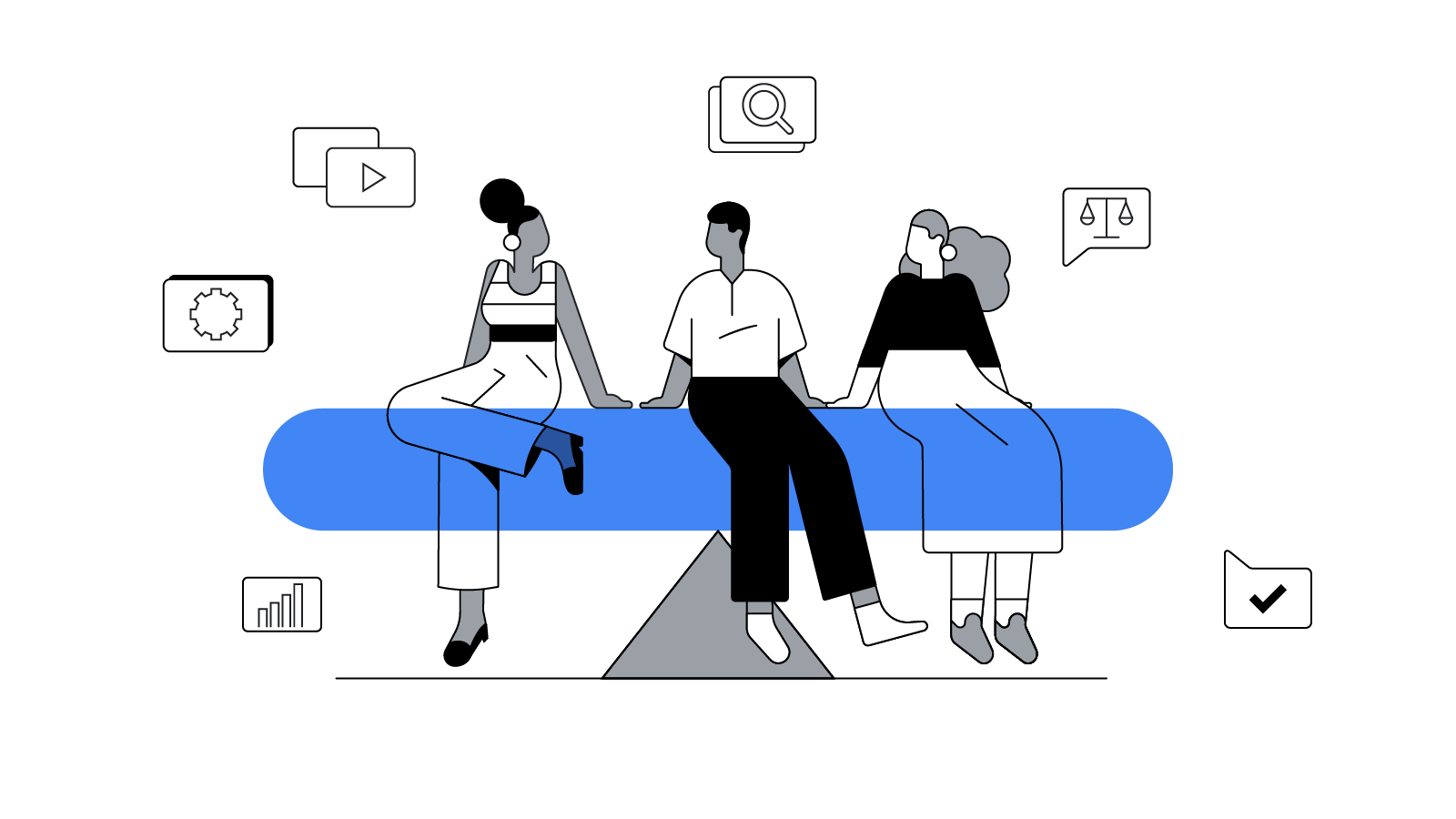David Aguilar is a product marketing manager at Google. Aguilar leads trainings on transgender and gender nonconforming inclusivity for Google and is creating guidelines that will help make our products and marketing more relevant to this community.

“Excuse me, ma’am ... I mean ... sir, uh, hmmm … .” An awkward silence usually follows. This is a common occurence for me at work and in life as a gender nonconforming (GNC) person, albeit a small experience compared to the continued violence, ignorance, and rejection transgender people also survive.
As a Latinx person who’s a first-generation college graduate and as someone who has 12 piercings, dresses in bright colors, and wears platforms, I don’t often see myself represented in corporate leadership. I’m also absent from large marketing campaigns, except maybe those related to LGBTQ Pride.
You can make changes, both big and small, to your company’s policies, marketing campaigns, and your own day-to-day actions.
While companies strive to create more inclusive workplaces, the ongoing lack of support for and visibility of the transgender and GNC community poses several risks. Studies show that employee engagement drops 30% in unfriendly work environments, while environments where people feel a high sense of belonging are linked to a 56% increase in job performance and 50% decrease in turnover risk. And employee satisfaction has a financial impact: Talent shortages are projected to cost the United States over $435 billion by 2030. Additionally, a lack of inclusivity can have external costs too: 48% of Americans say they’d avoid purchasing products or services from companies who discriminate against the LGBT community.
To be an advocate for transgender or GNC people, you can make changes, both big and small, to your company’s policies, marketing campaigns, and your own actions.
Make your entire company inclusive — even the restroom
Transgender individuals in the workplace are almost twice as likely to hear sexist comments about their community. Ask yourself, “What policies, if any, exist at my company that make transgender and GNC employees feel safe and seen?”
One of the most salient recommendations I have is the creation of gender-neutral or inclusive restrooms and facilities. Unfortunately, I’ve had my fair share of uncomfortable moments and even felt anxiety or avoided going to the restroom during work, an experience shared by 59% of trans individuals.
In addition to updating facilities, companies can enact policies that support someone’s transition, pronoun usage, and inclusive dress codes. And, with the recent Supreme Court ruling protecting gender identity under the Civil Rights Act, companies must review hiring practices, interview questions, and diversity initiatives to identify and eliminate implicit bias or unintended transphobia.
Educate yourself and others on gender diversity
Seventy-seven percent of transgender employees have hidden their identity at work out of fear of discrimination. Equipping everyone at your company with knowledge surrounding gender diversity, or the difference between sexual orientation and gender identity, is pivotal to alleviating transgender employees’ fears. After your company puts inclusive policies in place, the next step is formally including gender identity in your company’s inclusivity training.

Be inclusive all 12 months of the year
Pride Month is a powerful opportunity for marketers to promote an authentic and positive representation of the transgender community. And it generates positive business impact. According to a study by Ogilvy, 64% of LGBT allies and 46% of Americans said brands’ LGBT-inclusive advertising would make them more likely to consider purchasing its products or services.
However, representation and visibility of transgender and GNC individuals should not be relegated only to Pride campaigns. We don’t cease to exist once Pride ends. Companies must continue to engage our community throughout the year, and also be particularly cognizant that there is a difference between the LGB and the T. Inclusion of different sexual orientations does not mean different gender identities are accounted for. Taking it a step further, companies should also be aware of how intersectional transgender and GNC individuals who are Black, brown, disabled, or older are included.

Break out of a binary mindset
Companies should not only make the transgender and GNC community feel safe and seen, but they should also reconsider their value propositions and product positioning in relation to rigid gender binaries, as these are not the only way forward. This shift is especially important as younger generations are actively redefining their relationship with their gender. Studies show that 12% of millennials in the United States identify as transgender or GNC, and 56% of Gen Zers know someone who uses gender-neutral pronouns such as they/them or ze instead of traditional gender pronouns like she/her or he/him. Gen Z is also less inclined to purchase products strictly based on gender.
Make allyship a daily habit
As our country and society works to address systemic racism and fight for Black lives, the intersection of gender identity must also be acknowledged and fought for — Black Trans Lives Matter. At least 26 transgender people have been killed this year alone, with a majority of these murders being transgender women of color. And that number doesn’t include the dozens of cases that go unreported.
If you can’t attend a protest, you can still be an advocate and an ally by donating your time or money to transgender and GNC-led organisations like the Marsha P. Johnson Institute or Bienestar. You can also vote to ban transphobic laws or policies (the transgender panic defense is still legal in more than 25 states). And don’t be afraid to speak up: Use the right pronouns and correct those who don’t, challenge transphobic jokes, and support inclusive policies and trainings.







